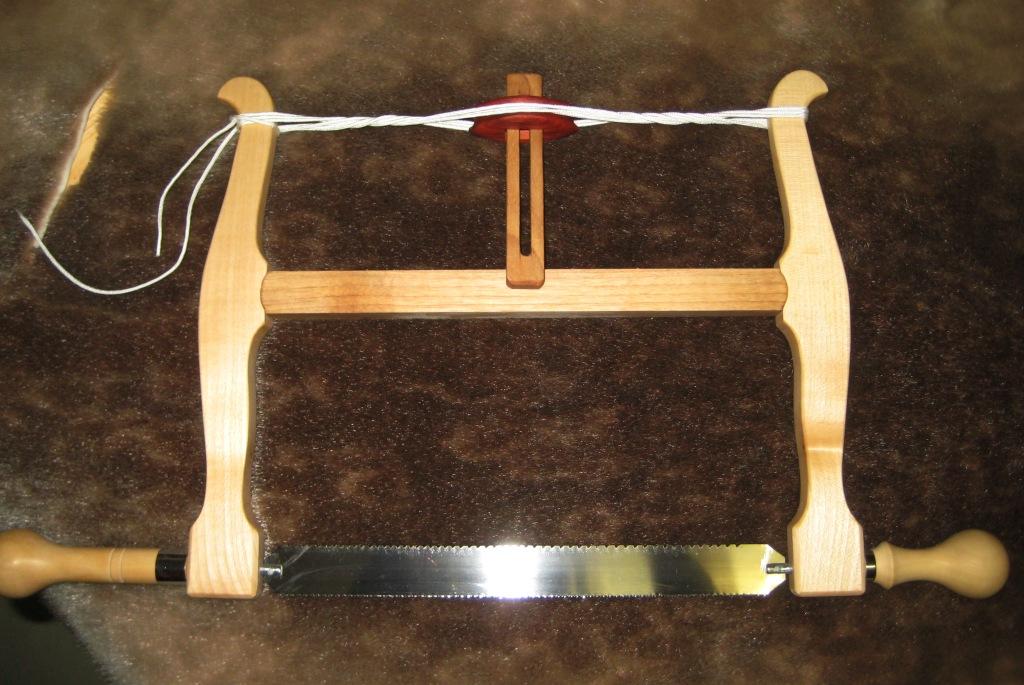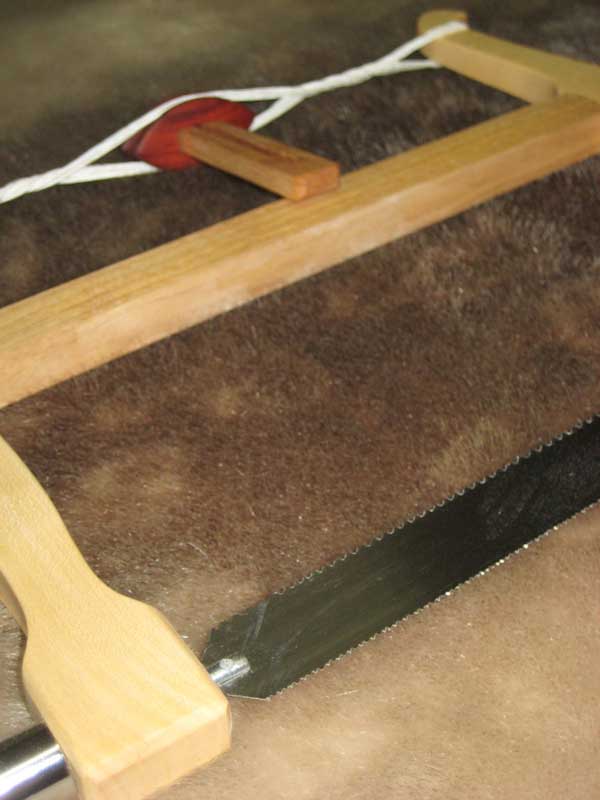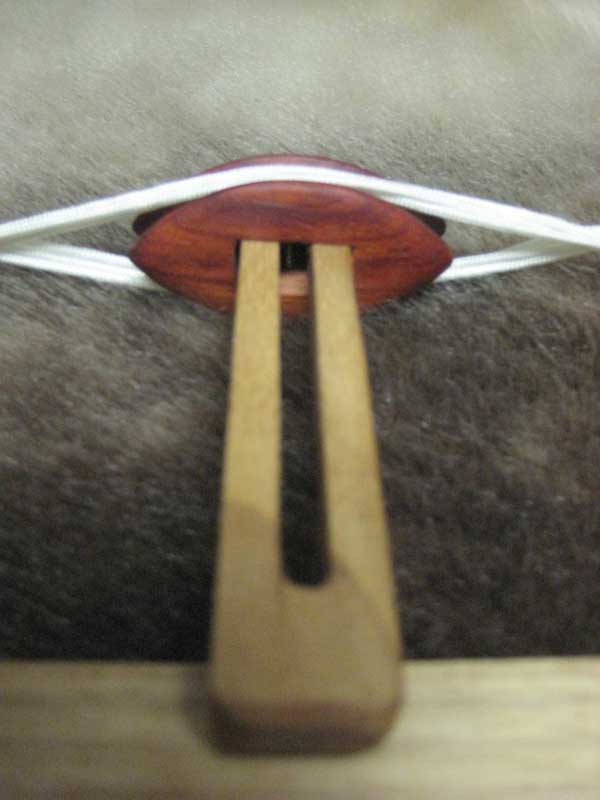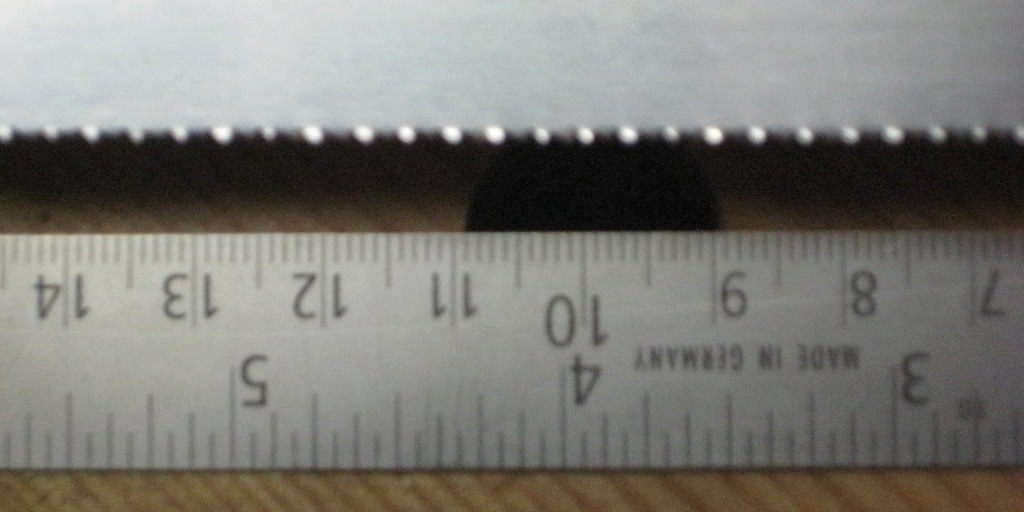Dear all,
Thank you for your replies. I am happy that's not only me who likes this small bow saw.
Wow I like that a lot !, like the 'sliding toggle' too-someone is gonna steal that idea-brilliant, eye candy curves too.
Well, to be honest, it is not my idea...I stole it from an old bow saw I purchased from England (and for which I filed a saw blade yesterday. Will post pics later).
Philipp...if you could explain the choice of various woods that you used and their context within the saw based on their characteristics...I am all for learning these things....
Hi Jim, I simply used what I had. The wood for the bows has to be stable enough to withstand the tensioning powers. So I thought that maple was a good choice. Also ash or beech would work fine (as many other species).
The stretcher doesn't need to be that strong, therefore I chose some light weight wood from my scrap box and stumbled over the walnut sap wood.
I've never used a bow saw. What are the advantages (apart from looking very good)?
Smudger, I can't tell what the advantages of a bow saw are. I suppose most people would rather think that it had disadvantages compared to e.g. back saws.
I just wanted to make one and wanted to find out how it works.
I live in Germany and over here almost all woodwork of former times was made with bow saws. Those nice back saws that you have in the UK were not so well known and used here. My personal guess is that cabinetmakers simply were too poor to afford these nice saws that indeed work very well. Bow saws are easy to make when you have woodworking skills. Making back saws requires some skills and equipment in metalwork which the fewest had (same with planes: almost no iron planes over here, only wood planes. The cabinet maker only needed to purchase the irons and could make the rest in his own).
Based on that background I wanted to learn how to use a bow saw and how it works compared to a back saw. And it teaches me much. Working with a bow saw is definitely something different than working with a back saw. Not necessarily better or worse.
Since much of our woodwork is also about training our fine motor skills, using a bow saw is a new and helpful experience.
Best regards, Philipp












